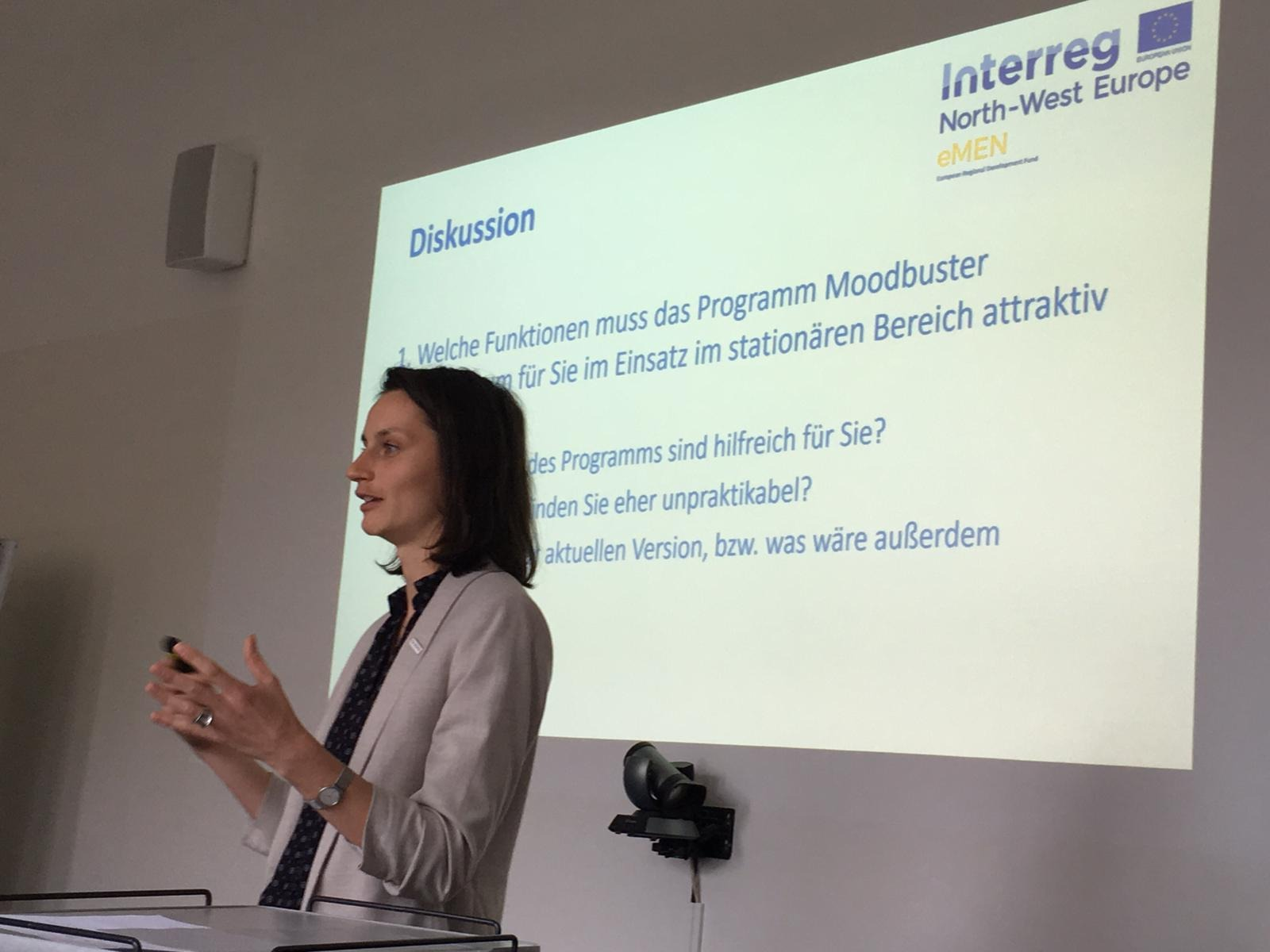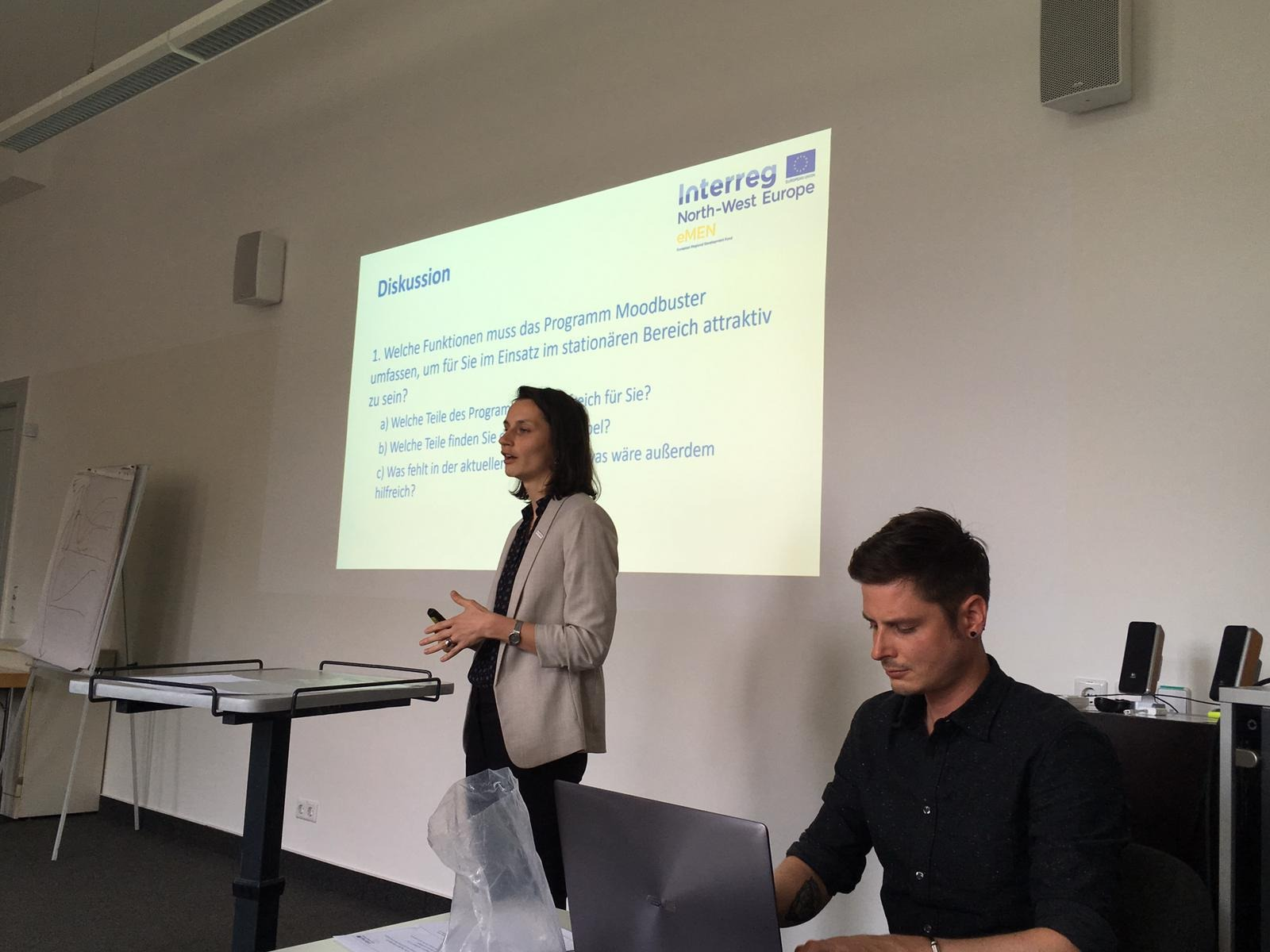The interest in e-mental health is increasing, not least because of projects such as eMEN. With increased interest comes the possibility to explore new and previously neglected areas for application. Though internet-based interventions have acquired a solid evidence base in a variety of settings, especially when provided with some form of human support, little is known about their application in inpatient contexts. That is why researchers from the eMEN project have conducted a workshop on the acceptance and benefits of internet-based interventions in 10 mental health institutions all across Germany: Schleswig-Holstein, Berlin, Brandenburg, North Rhine-Westphalia and Bavaria. Participants ranged from senior to junior physicians, psychiatrists, psychologists, and even occupational therapists. They received a live introduction to Moodbuster - an internet-based treatment for depression - and had the opportunity to work hands on with the program. Moreover, they completed questionnaires on the usability and acceptance as well as on advantages and disadvantages of internet-based interventions in inpatient settings. Each workshop was concluded by a group discussion. In these discussions, the researchers gathered information on the essential intervention components that staff members require in order to use an internet-based intervention. Finally, barriers to implementation, as well as chances and risks associated with internet-based interventions were discussed.
The results of the questionnaires will be analysed in the upcoming months. However, a few trends emerged during the discussions. Generally, most participants were enthusiastic about the use of internet-based interventions, such as Moodbuster, in ambulant settings. They were more reluctant however to provide a full online intervention to their inpatients. Staff feared the reduction of already limited contact hours with their patients. Despite this reservation, certain components, such as a psychoeducational module, were deemed beneficial. An often mentioned application was bridging the time between face-to-face sessions.
Unfortunately the largest barrier to implementation from a technical perspective was the lack of infrastructure. Almost none of the 10 institutions regarded their Wi-Fi connection or availability of computer workspaces as sufficient for implementing an internet-based intervention. Finally, privacy and data safety remained a concern.


